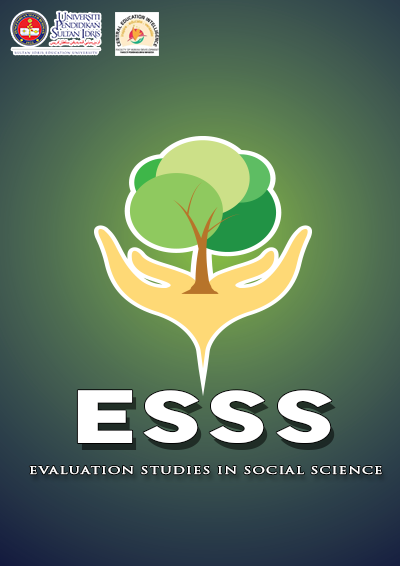Analyzing Cohesion and Coherence in Malay as a Second Language Writing by Tamil Learners
DOI:
https://doi.org/10.37134/esss.vol1.2.5.2020Keywords:
Cohesion, coherence, textuality, second language learningAbstract
This small-scale study attempted to investigate the use of cohesive devices and its relation to overall textual coherence in writing Malay as second language learning by Tamil language learners. The respondents were 5 4th semester students studying at Sultan Idris Education University (UPSI). This study employed one of the qualitative research method, descriptive approach to identify the use of cohesion and its relation to overall textual coherence. The objective of this study is to identify the use of cohesion in respondents writing and its relation to textual coherence in Malay writing. Analysis of finding revealed that the respondents encounter some difficulties in using proper cohesion which interrupts the coherency of the sentences. This paper provides a general overview of the use of cohesion in second language writing to create text coherence.
Downloads
References
Ahmadi, A., & Parhizgar, S. (2017). Coherence errors in Iranian EFL learners’ writing: A rhetorical structure theory approach. Journal of Language Horizons, 1(1), 9-37.
Akdal, D., & Sahin, A. (2014). The effects of inter-textual reading approach on the development of creative writing skills. Eurasian Journal of Educational Research, 54(1), 171-186.
Creswell, J. W. (2014). Research design qualitative, quantitative, and mixed methods approaches. Thousand Oaks CA: Sage.
Diliduzgun, S. (2013). The effect of process writing activities on the writing skills of prospective Turkish teachers. Eurasion Journal of Educational Research, 52(1), 189-210.
Faradhibah, R. N., & Nur, N. A. (2017). Analyzing students’ differences in maintaining their coherence and cohesion in the writing process. Eternal, 3(2), 183-194.
Fengjie, L. Xiuying, Y. & Chuanze, Z. (2014). Analysis of the problems on coherence in college English writing. International Journal of Language and Linguistics, 2(6), 387-390.
Ghasemi, M. (2012). An investigation into the use of cohesive devices in second language writings. Theory and Practices in Language Studies, 3(9), 1615-1623.
Gholami, H., & Alizadeh, F. (2017). A contrastive study of lexical cohesion in introduction in research articles: native English and Iranian applied linguistics. Journal of Applied linguistics and Language Research, 4(8), 307-316.
Halliday, M.A.K., & Hasan, R. (1976). Cohesion in English. London: Longman.
Hananta, N., & Sukyadi, D. (2015). The use of cohesion in students’ argumentative writings. Rangsit Journal of Educational Studies, 2(1), 37-65.
Karadeniz, A. (2017). Cohesion and coherence in written texts of students of Faculty of Education. Journal of Education and Training Studies, 5(2), 93-99.
Kuzu, S. T. (2016). The impact of a semiotic analysis theory-based writing activity on students’ writing skills. Eurasian Journal of Educational Research, 63 (1), 37-54.
Qingxin, C. (2019). Cohesion and coherence in college English writing teaching. Advances in Higher Education, 3(2), 30-34.
Schiffrin, D. (1987). Discourse markers. London: Cambridge University Press.
Thouqan, S. M. (2019). Cohesion and coherence in the writings of Saudi undergraduates majoring in English. Journal of Social Sciences and Humanities, 5(3), 200-208.
Van Dijk, T. (1977). Coherence text and context: explorations in the semantic and pragmatics of discourse. London: Longman.
Downloads
Published
How to Cite
Issue
Section
License
Copyright (c) 2023 Kaaminy Kanapathy

This work is licensed under a Creative Commons Attribution-NonCommercial-ShareAlike 4.0 International License.





